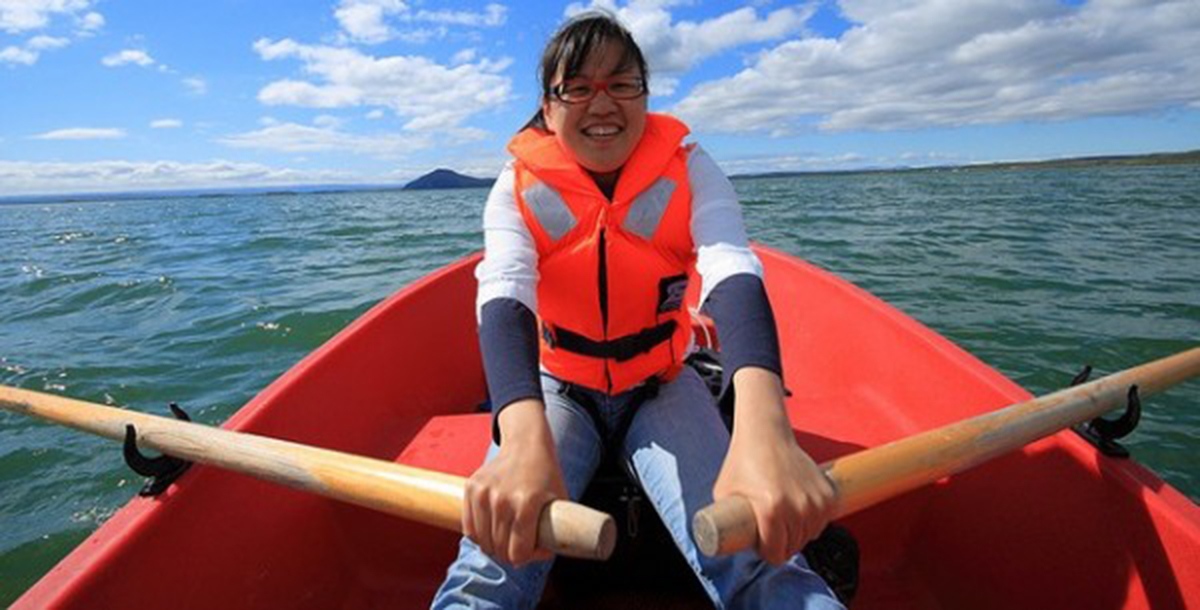Table of Contents
Researchers at the University of Alabama at Birmingham tell us that older people need to work out more often to maintain muscle mass. The only solution for older people is regular, low-impact exercise. Fortunately, there are a variety of routines.
Low-impact workouts don't have to be boring. A good example is rowing.
 Their strategy? Whenever the younger teams would catch up, they would talk about how tired they were and how they weren't sure they would even finish the day's lap. The younger teams would then find a cove and drink beer while he and his rowing partner would sneak past them, rowing as fast and as quietly they possibly could. (Rister's partner the engineer scouted for and found currents that would accelerate their speed downstream.) And to whom did they lose? A 75-year-old man, also a hydrological engineeer, who had used the same ruse on them.
Their strategy? Whenever the younger teams would catch up, they would talk about how tired they were and how they weren't sure they would even finish the day's lap. The younger teams would then find a cove and drink beer while he and his rowing partner would sneak past them, rowing as fast and as quietly they possibly could. (Rister's partner the engineer scouted for and found currents that would accelerate their speed downstream.) And to whom did they lose? A 75-year-old man, also a hydrological engineeer, who had used the same ruse on them.
Rowing is a great outdoor exercise. Be sure to you know what to do if your canoe capsizes and carry flotation devices. Feign weakness if in a race. And if you choose to your rowing indoors, it is still a great way to develop your arms, back, and shoulders.
How much exercise is necessary to maintain muscle mass?The Centers for Disease Control recommend 150 minutes a week, or just 75 minutes a week, in at least two sessions, if done at high intensity. The important thing is to choose exercises you enjoy and will do regularly.
4. Rowing
Author Robert Rister once entered a canoe race down the length of the Colorado River in Texas, a trip of about 300 miles (500 km). Both he and his partner, a civil and hydrological engineer who had pulled his back and could not row, were already in their 40's, and out of shape, but they managed to come in second, beating both the Army and US Marine Corps teams, whose entrants were in their early 20's.
Rowing is a great outdoor exercise. Be sure to you know what to do if your canoe capsizes and carry flotation devices. Feign weakness if in a race. And if you choose to your rowing indoors, it is still a great way to develop your arms, back, and shoulders.
5. Free weights
Dumbbells are for smart exercise. Once you have used machines at the gym long enough to master form and techniques, you can use free weights at the gym or anywhere you like to continue muscle maintenance. Start with a weight that you are comfortable using for 8 to 15 repetitions. When 12 repetitions becomes easy, find a heavier weight. Limit yourself to two weight training sessions a week to give muscles time to repair and rebuild themselves.6. Water exercise
Deep-water exercise is a great way to do walking, running, or biking if you are badly out of shape. Deep water supports your body and takes pressure off your joints. Always start in deep water and progress to shallow, because shallow-water exercises offer less support and are harder to do.7. Cardio machines
From time to time everyone has some kind of foot or leg injury that keeps them from doing their regular cardio routine. An ergometer at the gym, operated with the arms, however, allows keeping up cardiovascular fitness while legs or feet heal.8. Circuit exercise
Circuit exercise workouts work out the entire body without working any particular joint or muscle too much. The easiest way to start doing circuit exercise is to do 10 minutes of cardio followed by body weight exercises, and then another 10 minutes of a different form of cardiovascular exercise. Add exercises to your circuit and you gain muscle strength.9. Exercise classes
Peer pressure is not always bad. Exercise classes are a good way to stay in shape with pointers from your instructors and classmates.10. Yoga
Many seniors shun yoga because they can't imagine ever being able to twist themselves into pretzel-like shapes while standing on one foot. The simple fact is, many seniors are never able to do all the poses. However, learning just a few yoga poses strengthens muscles and trains the brain to keep the body balanced. Your ability to do even a little yoga may be what keeps you from slipping when you get out of the bath or falling down icy steps.How much exercise is necessary to maintain muscle mass?The Centers for Disease Control recommend 150 minutes a week, or just 75 minutes a week, in at least two sessions, if done at high intensity. The important thing is to choose exercises you enjoy and will do regularly.
- Bickel CS, Cross JM, Bammam MM. Exercise dosing to maintain resistance adaptations in younger and older adults. Med Sci Sports Exercise. Jul 2011. 43(7) 1177-87.
- Photo courtesy of 26129297@N02 on Flickr: www.flickr.com/photos/26129297@N02/2535799335/
- Photo courtesy of Bruce McAdam on Flickr: www.flickr.com/photos/bruce_mcadam/2674561685/

